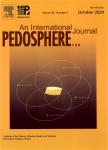Distribution of Mineral Nutrients and Active Ingredients in Aloe vera Irrigated with Diluted Seawater
Distribution of Mineral Nutrients and Active Ingredients in Aloe vera Irrigated with Diluted Seawater作者机构:College of Resources and Environmental ScienceKey Laboratory of Marine BiologyNanjing Agricultural University Tobacco Research InstituteAnhui Academy of Agricultural Science College of Life ScienceNanjing Agricultural University
出 版 物:《Pedosphere》 (土壤圈(英文版))
年 卷 期:2014年第24卷第6期
页 面:722-730页
核心收录:
学科分类:090706[农学-园林植物与观赏园艺] 0907[农学-林学] 09[农学]
基 金:Supported by Jiangsu Provincial Independent Innovation Program of Agricultural Science and Technology,China(No.CX(12)100504) Zhejiang Provincial Oceanic and Fishery Projects,China(No.108) the Major Scientific Research Projects of Zhejiang Province,China(No.2012C12017-3)
主 题:aloin growth nutrition distribution polysaccharide seawater irrigation
摘 要:With increasing demand for irrigation water, agricultural scientists and planners pay more attention to the utilization of diluted seawater as an alternative source for irrigation of crops. A greenhouse pot experiment was conducted to study how seawater stress(SS) affects growth, water content, cationic accumulation, and active ingredients in leaves of Aloe vera after 30 d of growth in nutrient media with 0%(control), 22%(22% SS), and 42%(42% SS) seawater stress. Results indicated the SS did not change dry biomass of leaves and stems, but gradually decreased biomass allocation to roots with increasing seawater stress. Na+and Cl-in A. vera plant did not increase obviously with a big increase in seawater percentage due to low transpiration of Aloe vera. 42% SS decreased N concentration in most plant organs, but did not change or increased P concentration. Seawater stress tended to decrease concentrations of K+and Ca2+in A. vera. However, seawater salinity tended to increase the concentrations of aloin concentration in top(young) and middle leaves, and there was no significant effect of both stresses on aloin concentration in base(old) leaves. The 42% SS treatment decreased polysaccharide concentrations only in the base leaves, but not in top and middle leaves. In summary, supplying suitably diluted seawater for 30 d could increase the qualities and value of A. vera, without substantial effects on shoot dry biomass production.



